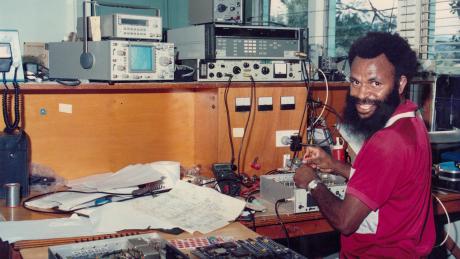
As we celebrate 80 years of Mission Aviation Fellowship around the world, we take a moment to reflect on the legacy of the MAF Technologies team in Papua New Guinea – and their vision for the future.
Story by Matt Painter
In April 1946, a radio-focussed mission was born in New South Wales, Australia. Like MAF, it was the God-planted vision of people who had learned technical skills during the war – people who had been inspired to use those skills to further God’s kingdom.
Claude D’Evelynes, Bob Hartnell and Syd McLeod-Jones formed Christian Radio Missionary Fellowship (CRMF) – with the unwavering support and sacrifice of their families.
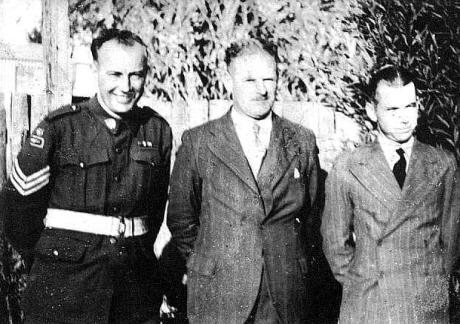
They initially felt called to set up a broadcasting service to transmit the gospel across the region, however, along the way they began supplying radios to missionaries, and even supplied heavily discounted equipment such as amplifiers, public address systems and tape recorders to churches in Australia.
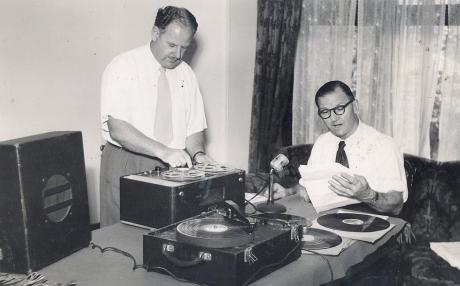
In 1949, before MAF was even flying in New Guinea, CRMF had supplied radio transceivers to missionaries as far as the Nuba mountains of Sudan.
After an MAF accident in 1951, the CRMF team were inspired to create their own lightweight, ‘tropic-proof’ transceiver. It was reported that this was ‘better suited for missionary purposes than any other unit of its power’, and it cost less too.
Soon, transceivers manufactured by CRMF were serving missionaries in Borneo, the New Hebrides, Dutch New Guinea, New Guinea and the Congo.
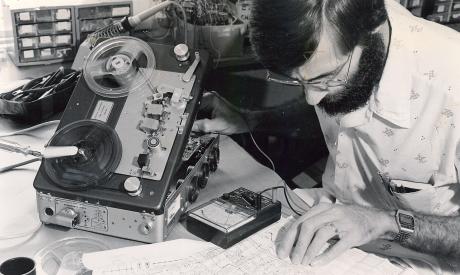
This impact of this transceiver – and the continual denial of broadcasting licence applications – eventually led CRMF to adopt a new vision and establish their work in New Guinea. In 1955 they set up a base at Rugli, not far from Mount Hagen, where MAF’s aviation operation is now based.
In June 1956 CRMF created the ‘network’ – a set of radio frequencies that enabled missions and churches to communicate using their radio transceivers across the Territories of Papua and New Guinea.
In plain English, this meant that missionaries in remote villages could now talk to people outside their valley.

It was a high impact ministry with a tremendous growth rate. Not even two years later, there were 50 mission stations on the network, and one of the main users was none other than MAF – receiving invaluable weather reports and transmitting operational information across the island.
By the 1980s, about 540 outstations used the network. CRMF were handling around 150 medical emergencies each year. In one month of 1984, 216 medical calls were received in 216 days – tribal fighting had caused numerous casualties.
In one month of 1984, 216 medical calls were received in 216 days.
CRMF have always been innovators. In the early nineties, a ‘phone-patch’ service was created, enabling church and mission users to make phone calls via radio. It is still used today. In the late sixties CRMF even developed their own aircraft emergency beacon prototype.
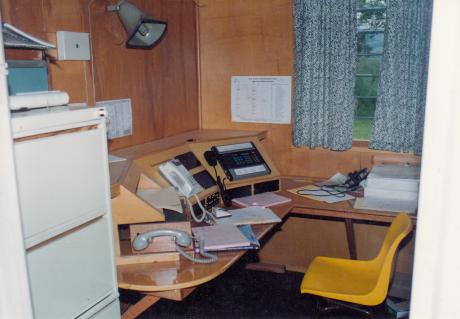
In 2009, CRMF became part of the MAF family. Both entities were missions serving isolated people with technical skills – and the ministry continues today under the name MAF Technologies, based in the town of Goroka.
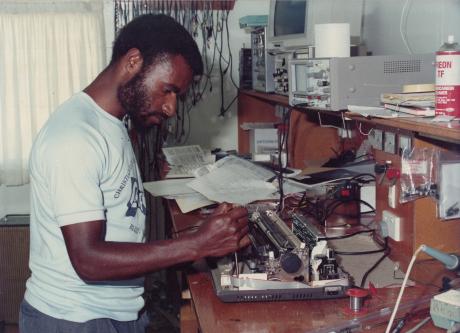
“The challenge for us going forward is that we need to reach beyond our horizon,” said Bryan Mathews, General Manager of MAF Technologies.
“One of the biggest technologies that we're now starting to use is harnessing renewable energy.
“At the same time, we are making sure we bring along those we serve, by talking about all these new advancements that are happening, so that they can be part of it – and we don't leave them behind.”
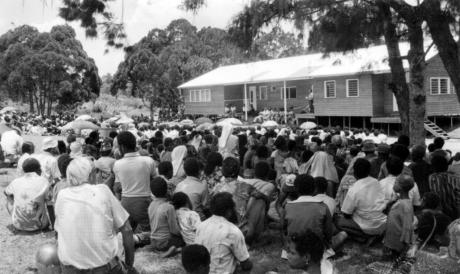
Cover photo: Fred Waga works on a Codan radio at Rugli workshop.